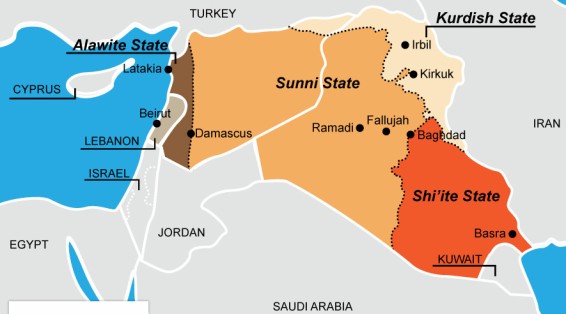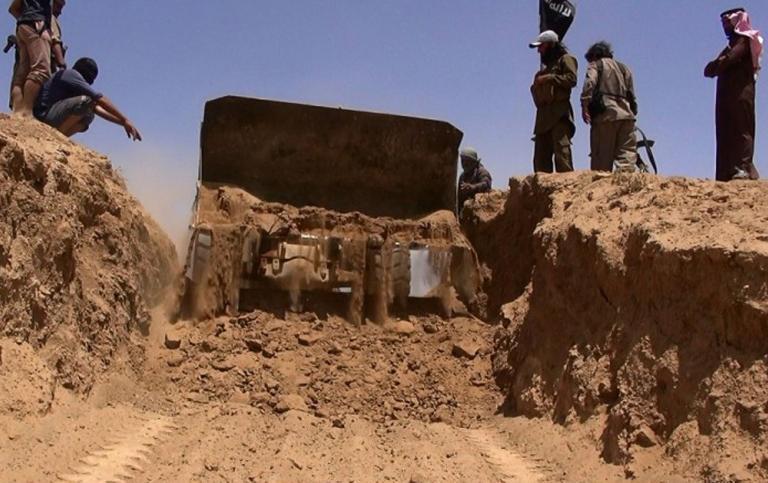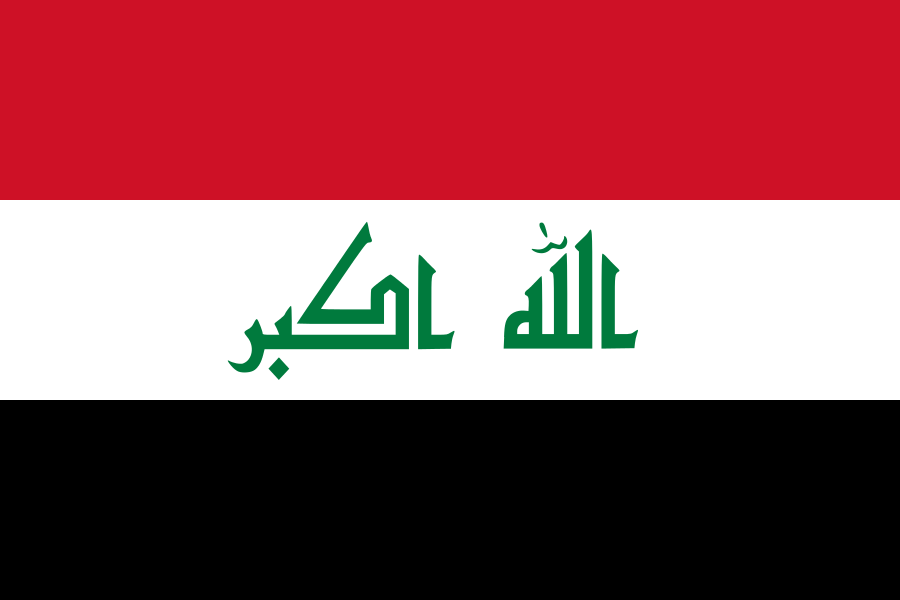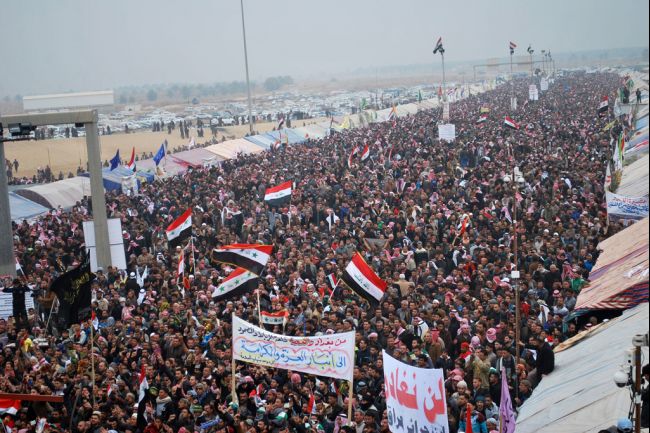Let’s not kid ourselves, Iraq no longer exists.

Courtesy of: http://www.vox.com/a/maps-explain-crisis-iraq
This is what the Levant region of the Middle East looks like as of August 19th, 2014. The old state borders are receding while new ones are being created. The border between Iraq and Syria has dissolved. There is a new, more solid border between Sunni-Iraq (North/West Iraq) and Shia-Iraq (South/East Iraq.)
This article will give a simple explanation of the meaning of these border changes.
The Iraqi-Syrian Border
Iraq and Syria are separate countries because of an agreement made between the UK and France in 1916. This agreement was called the Sykes-Picot agreement. In 1916 the UK and France drew a line in the sand and called one side “Iraq,” and the other side “Syria.” This line separated the Sunnis living on both sides and pushed them into different countries. They were forced to share their new countries with other groups like the Shias and Arab minority groups. Likewise, these groups had to share their new countries with the Sunnis.
It was not the most amiable arrangement. Western powers tried to sooth ethnic tensions in Iraq and Syria by attempting to strip Arabs of their ethnic identities, promoting nationalism, and installing kings from foreign lands. Eventually the Western-backed kings were overthrown in Iraq and Syria and anti-Western dictators took their place. These dictators were Hafez al-Assad (Bashar al-Assad’s father) and Saddam Hussein.
Saddam Hussein and Hafez al-Assad kept their country’s ethnicities from fighting each other by killing or jailing anyone who disrupted the status-quo. At the same time, both dictators promoted an eventual dissolution of the borders between their states. You can see this in the old flags of Syria and Iraq. The Iraqi flag had two stars: one for Iraq, and one for Syria. The Syrian flag is almost the same, but with three stars.
The Sunni-Shia Border
In 2003 Saddam Hussein was overthrown by Western powers. While the West was able to succeed in taking away one of the cruelest dictators in history, they reverted back to ignoring ethnic identities and promoting nationalism as a way to keep Iraq together. It did not work and by 2004, many ethnic groups in Iraq had armed themselves and begun fighting each other as well as the Western powers in Iraq. One of these groups is now, “the Islamic State.” More on them soon.
The West feared that recognizing armed groups would hinder Iraqi nationalism, so they chose the Shia side of the conflict and fought the armed Sunni groups. Yes, I know that doesn’t make much sense. By 2007 the West and the new Shia Iraqi government were fighting a war against the Sunnis.
During this post-Saddam period, and with the West’s influence, the new Shia Iraqi government moved away from the idea of dissolving the Sykes-Picot borders. The Shia government wanted full control of Iraq, and with the Americans backing them, they were confident that they could get it. A change in the Iraqi flag reflects this decision. The new flag replaces the two stars with a generic phrase, “Allah akbar,” or “God is great.” No more one star for Iraq, one star for Syria.
The Borders Change
By 2011 the West and the Iraqi government had mostly won the civil war. The West got the hell out of there and pulled their troops and support from Iraq. Meanwhile the rest of the Arab world was rebelling against their dictators. The dictators in Tunisia, Libya, and Egypt had already been overthrown, and the rest of the Arab dictators were frantically making reforms in order to keep their power.
However, this was not the case in Syria. Hafez al-Assad’s son was still in control of his country and wanted to keep it that way. Pro-democracy demonstrators were cracked down upon with every violent tool Assad had. Eventually, almost reluctantly, ethnic tensions within Syria were inflamed and Sunni groups began arming themselves against Assad. Some of these groups had ties in Iraq and brought their battle-hardened Sunni friends from war-torn Iraq, into Syria in order to fight a war against Assad.
By 2012 civil war had come to Syria. Meanwhile in Iraq, tensions between the Sunnis and Shia were beginning to grow again. At the end of 2012 and beginning of 2013, peaceful Sunni protests spread across Northern Iraq but the protesters were eventually gunned down by the Shia Iraqi government. This ended the protests but tensions in Iraq grew.
Around this time it became clear to Sunni groups in both Iraq and Syria that with so much war and unrest going on in both countries, it was finally possible to eradicate the Sykes-Picot borders. Without the borders keeping them appart, Sunnis in both countries would be stronger and better able to fight off the Shia government in Iraq, and Assad in Syria.
By the end of 2013 Sunni portions of Iraq began overthrowing their Shia governors. In June 2014 a Sunni military group called, “ISIS,” a group fighting in Syria but had originally come from fighting Americans in Iraq, blitzed into northern Iraq from Syria.
Sunni towns and cities either welcomed ISIS or didn’t resist them. Soon ISIS and other allied Sunni groups were in control of all of northern Iraq as well as a large portion of Syria. ISIS solidified their territory by claiming it as all one country. They now call this new country and themselves, “The Islamic State.” Today this is the flag that flies over much of Syria and what was once more than half of Iraq:
Now what?
I am going to have to make this a two-part post. The second post will examine the future and take a look at what is over the Iraqi horizon, and whether or not there is an Iraqi horizon to look over.





